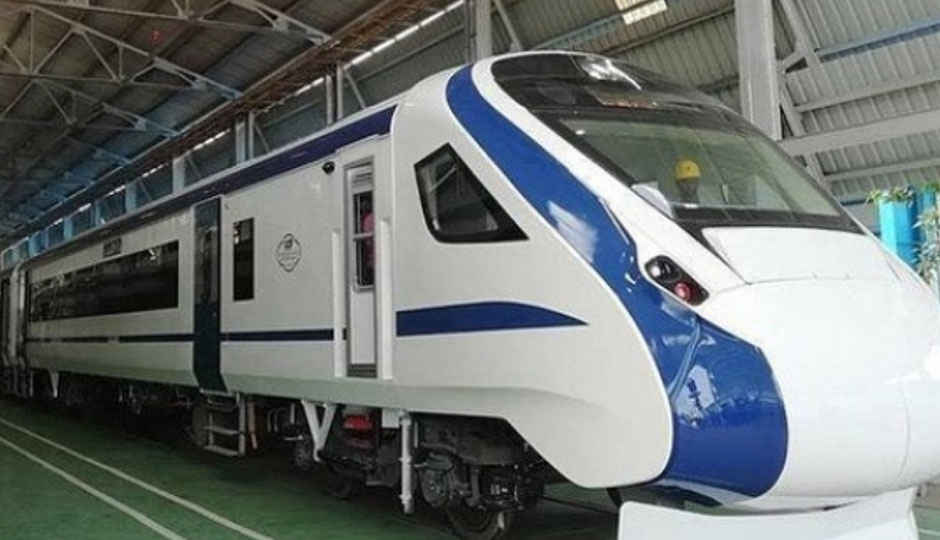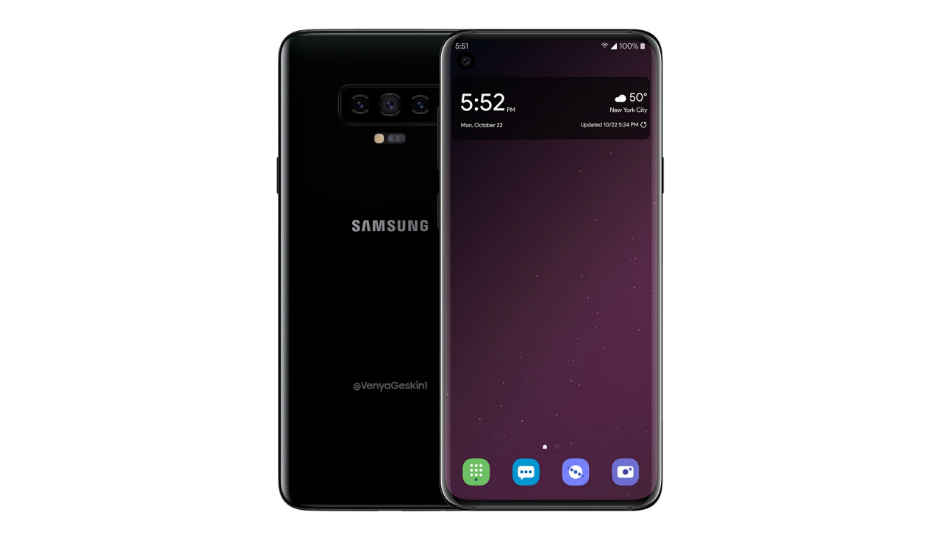 The Nokia 7.1 is the latest device in HMD global Nokia Plus series. The phone features almost a similar design as the Nokia 6.1 Plus and Nokia 5.1 Plus. The smartphone comes with a traditional notch on top of the display with an aspect ratio of 19:9. This mid-range segment smartphone not just carries the same design as the Nokia 6.1 Plus but also have similar specifications such as a Qualcomm Snapdragon 636 processor and 3,500mAh battery. However, there are some upgrades that has been made by the company in terms of cameras and OS. so, let’s take a look at the specifications of these two to see what’s different company has come up with its latest device in comparison to the Nokia 6.1 Plus. The Nokia 6.1 Plus sports a 5.8-inch display that offers a resolution of 1080 x 2280 pixels. On the other hand, we have the Nokia 7.1, which comes with a 5.84-inch display that offers the same resolutions as the Nokia 6.1 Plus. When it comes to the performance, both devices are powered by a Qualcomm Snapdragon 636 processor, which is paired with 4GB RAM and 64GB internal memory. As far as the cameras are concerned, the Nokia 6.1 Plus is equipped with a dual 16MP + 5MP rear camera with a 16MP unit on the front, while the Nokia 7.1 features a dual 12MP + 5MP rear camera with an 8MP unit at the front. Overall, the Nokia 6.1 Plus looks a lot better in terms of hardware at least on paper. However, one should keep in mind that the Nokia 7.1 runs on Android 9.0 Pie, while the Nokia 6.1 Plus still runs on Android 8.1 Oreo. The Nokia 7.1 will be launched at a price of Rs 19,999 in India, while you can get the Nokia 6.1 Plus at Rs 15,999.
The Nokia 7.1 is the latest device in HMD global Nokia Plus series. The phone features almost a similar design as the Nokia 6.1 Plus and Nokia 5.1 Plus. The smartphone comes with a traditional notch on top of the display with an aspect ratio of 19:9. This mid-range segment smartphone not just carries the same design as the Nokia 6.1 Plus but also have similar specifications such as a Qualcomm Snapdragon 636 processor and 3,500mAh battery. However, there are some upgrades that has been made by the company in terms of cameras and OS. so, let’s take a look at the specifications of these two to see what’s different company has come up with its latest device in comparison to the Nokia 6.1 Plus. The Nokia 6.1 Plus sports a 5.8-inch display that offers a resolution of 1080 x 2280 pixels. On the other hand, we have the Nokia 7.1, which comes with a 5.84-inch display that offers the same resolutions as the Nokia 6.1 Plus. When it comes to the performance, both devices are powered by a Qualcomm Snapdragon 636 processor, which is paired with 4GB RAM and 64GB internal memory. As far as the cameras are concerned, the Nokia 6.1 Plus is equipped with a dual 16MP + 5MP rear camera with a 16MP unit on the front, while the Nokia 7.1 features a dual 12MP + 5MP rear camera with an 8MP unit at the front. Overall, the Nokia 6.1 Plus looks a lot better in terms of hardware at least on paper. However, one should keep in mind that the Nokia 7.1 runs on Android 9.0 Pie, while the Nokia 6.1 Plus still runs on Android 8.1 Oreo. The Nokia 7.1 will be launched at a price of Rs 19,999 in India, while you can get the Nokia 6.1 Plus at Rs 15,999.from Latest Technology News https://ift.tt/2AOvIca
 The PUBG Mobile Star Global Challenge has ended and after the dust settled, the RRQ Athena team from Thailand emerged victorious. As winners of the tournament, the team won $200,000, which is approximately Rs 1,40,13,000. The Comfortable Penguin Team from China placed second and won $100,000 (approx Rs 70,06,500). To recall, the event took place from November 29 to December 1, at the Festival Arena in Dubai. The event allows players to participate in squads of four and battle it out for a total prize pool of $600,000 (approx Rs 4,20,39,000). The event wasn’t open to all however, and was limited to players who have a fan following of at least 1,000 people on platforms such as YouTube Gaming, Twitch, Facebook Live, Smashcast TV, Mixer, Cube TV, Nimo TV, etc. There are no such requirements for the remaining three players. However, there can be no substitutes and rosters could not be changed mid-way through the tournament. At the closing of the event, PUBG Mobile also teased a crossover with Resident Evil 2. PUBG Mobile is already a pretty popular game to say the least and such lavish prize money being awarded to players is definitely going to attract more players to the game. If you want to take your PUBG Mobile game to the next level, you might want to take a look at this list, which ranks the damaging weapons in the game. If you are a complete beginner in the game (or just can’t get to grips with the basics) you might want to check out our beginners guide. Our driving tips might also give you a leg up when you are on the road in PUBG Mobile. Who knows, you and your team might just end up representing India in next year’s edition of the tournament. Congratulations to RRQ Athena - the champions of PUBG MOBILE STAR CHALLENGE 2018! #winnerwinnerchickendinner pic.twitter.com/8R63LGBSOR — PUBG MOBILE (@PUBGMOBILE) December 1, 2018
The PUBG Mobile Star Global Challenge has ended and after the dust settled, the RRQ Athena team from Thailand emerged victorious. As winners of the tournament, the team won $200,000, which is approximately Rs 1,40,13,000. The Comfortable Penguin Team from China placed second and won $100,000 (approx Rs 70,06,500). To recall, the event took place from November 29 to December 1, at the Festival Arena in Dubai. The event allows players to participate in squads of four and battle it out for a total prize pool of $600,000 (approx Rs 4,20,39,000). The event wasn’t open to all however, and was limited to players who have a fan following of at least 1,000 people on platforms such as YouTube Gaming, Twitch, Facebook Live, Smashcast TV, Mixer, Cube TV, Nimo TV, etc. There are no such requirements for the remaining three players. However, there can be no substitutes and rosters could not be changed mid-way through the tournament. At the closing of the event, PUBG Mobile also teased a crossover with Resident Evil 2. PUBG Mobile is already a pretty popular game to say the least and such lavish prize money being awarded to players is definitely going to attract more players to the game. If you want to take your PUBG Mobile game to the next level, you might want to take a look at this list, which ranks the damaging weapons in the game. If you are a complete beginner in the game (or just can’t get to grips with the basics) you might want to check out our beginners guide. Our driving tips might also give you a leg up when you are on the road in PUBG Mobile. Who knows, you and your team might just end up representing India in next year’s edition of the tournament. Congratulations to RRQ Athena - the champions of PUBG MOBILE STAR CHALLENGE 2018! #winnerwinnerchickendinner pic.twitter.com/8R63LGBSOR — PUBG MOBILE (@PUBGMOBILE) December 1, 2018  For long, there has been talk of bringing the bullet train to India, and while the country still waits for the Japanese marvel to make its way here, our own indigenous engineers have developed the next best thing. Dubbed Train 18, India’s first locomotive-less train, has reportedly breached the 180kmph speed mark on the Kota-Sawai Madhopur section. Unlike current trains plying on the railway network, Train 18 is not ferried by an engine at the front, and instead, each bogey has an electronic motor that propels it, just like the way the Metro works in Delhi and Mumbai. The train is a wholly indigenous project being developed by the Integral Coach Factory based in Chennai. When talking about the possibility of commercial runs, S. Mani, General Manager of Integral Coach Factory in a quote to IANS said that “We expect Train 18 to commence its commercial run from January 2019. Normally the trials take three months. But now it is happening faster than expected.” Mani had earlier told IANS that if all went well, Train 18 would replace the current Shatabdi Express — a day train. Train 18 has the capacity to ferry 1128 passengers in 16 bogies with the first two bogies being first-class, having a capacity of 52 seats each. According to the plan, Train 18 is set to first commence between Delhi and Varanasi, with the hopes of a December 25 inauguration. As of the tentative plans right now, the train will leave Delhi at 6:00 a.m and arrive at Varanasi at 2:00 p.m. The return journey would commence at 2:30 p.m with the train arriving in Delhi at 10:30 p.m. The speedy turn-around time is attributed to the driver bogies at both ends of the train. Traditional trains require the engine to detach at one end and make a trip around the track at the other end before making the return journey, often causing major delays. While Train 18 is going to be operating at 160kmph speeds, 30kmph faster than the Shatabdi, its real achievements lie in all the savings. The train features regenerative breaks which should result in up to 30 percent energy savings. It will also have a smaller carbon footprint than the current Shatabdi Express. Train 18 will also be a wholly air-conditioned train, offering amenities such as onboard infotainment and Wi-Fi. As of now Train 18 is still under trial runs and while it would be exciting to have the train ply across various destinations, there is still one major challenge facing its rollout. According to an internal report by the Indian Railways, only 0.3 percent of its track is capable of supporting speeds as high as those that would be achieved by Train 18. What this means is that as the ICF readies the train for Indian rail-roads, the Indian Railways will also have to work quickly on upgrading tracks across important sectors.
For long, there has been talk of bringing the bullet train to India, and while the country still waits for the Japanese marvel to make its way here, our own indigenous engineers have developed the next best thing. Dubbed Train 18, India’s first locomotive-less train, has reportedly breached the 180kmph speed mark on the Kota-Sawai Madhopur section. Unlike current trains plying on the railway network, Train 18 is not ferried by an engine at the front, and instead, each bogey has an electronic motor that propels it, just like the way the Metro works in Delhi and Mumbai. The train is a wholly indigenous project being developed by the Integral Coach Factory based in Chennai. When talking about the possibility of commercial runs, S. Mani, General Manager of Integral Coach Factory in a quote to IANS said that “We expect Train 18 to commence its commercial run from January 2019. Normally the trials take three months. But now it is happening faster than expected.” Mani had earlier told IANS that if all went well, Train 18 would replace the current Shatabdi Express — a day train. Train 18 has the capacity to ferry 1128 passengers in 16 bogies with the first two bogies being first-class, having a capacity of 52 seats each. According to the plan, Train 18 is set to first commence between Delhi and Varanasi, with the hopes of a December 25 inauguration. As of the tentative plans right now, the train will leave Delhi at 6:00 a.m and arrive at Varanasi at 2:00 p.m. The return journey would commence at 2:30 p.m with the train arriving in Delhi at 10:30 p.m. The speedy turn-around time is attributed to the driver bogies at both ends of the train. Traditional trains require the engine to detach at one end and make a trip around the track at the other end before making the return journey, often causing major delays. While Train 18 is going to be operating at 160kmph speeds, 30kmph faster than the Shatabdi, its real achievements lie in all the savings. The train features regenerative breaks which should result in up to 30 percent energy savings. It will also have a smaller carbon footprint than the current Shatabdi Express. Train 18 will also be a wholly air-conditioned train, offering amenities such as onboard infotainment and Wi-Fi. As of now Train 18 is still under trial runs and while it would be exciting to have the train ply across various destinations, there is still one major challenge facing its rollout. According to an internal report by the Indian Railways, only 0.3 percent of its track is capable of supporting speeds as high as those that would be achieved by Train 18. What this means is that as the ICF readies the train for Indian rail-roads, the Indian Railways will also have to work quickly on upgrading tracks across important sectors. A lot of leaks including videos and photos of Samsung’s upcoming smartphone, the Galaxy S10, were released over the weekend. While a video shows the unboxing of the smartphone, an image shows the apparent back cover of the device. Tipster Ice Universe also claims that Samsung will unveil three models of the smartphone and the top-end model of the lineup will have two selfie cameras. He also claims that the devices will have an Infinity-O type display - something that we have already been hearing about since the South Korean company introduced it at its annual developers conference last month. Let’s first start with the video that leaked the alleged Samsung Galaxy S10+. Leaked by Slashleaks, the video shows a person mishandling a device that has three rear cameras and Samsung branding on the back. When seen from the front, the smartphone does not match the rumoured description of the device. Obviously we don’t know whether the leaks are true or fake, but the presence of thick bezels on the top and bottom of the display is something that is not likely to be seeon on the upcoming 2019 flagship. The corners of the device are rounder and the box contains a pair of old fashioned White coloured earphones with a 3.5mm jack. It has been seen that Samsung ships AKG-tuned high-quality wired earphones with its flagship models. In a nutshell, the phone in the video does not seem like the upcoming Galaxy S10+. The second leak is about the back cover of the device. Gizmochina has uploaded a number of images of a smartphone with a back cover claiming it to be the Samsung Galaxy S10. The back shows two cameras and a fingerprint sensor at the same place as it was in the Galaxy S8, Galaxy S8+ and the Galaxy Note 8. Samsung has already changed the position of the fingerprint sensor in the Galaxy S9 as well as the Note9 devices, so it is highly unlikely that Samsung will go back to the two-year old design and include a visible fingerprint sensor in the first place. Also, rumours are rife that the company will include an in-display fingerprint sensor, so having a physical sensor does not make sense. Just like seen in the video above, there are thick bezels on top and bottom of the device, which is implausible. The third set leak comes from tipster Ice Universe who tweeted that the three models of the Galaxy S10 that will reportedly launch at MWC in February-March will have an Infinity-O display. “The Galaxy S10 Lite, S10, and S10+ are all Hole in Super AMOLED screens, but the S10+ has dual front cameras, so the hole design is slightly different,” the tipster tweets. He did not reveal anything about the rumored fourth model with 5G support, which is reported to come later with the company’s foldable smartphone. Ice Universe's information is completely different from what Slahsleaks and Gizmochina have reported and falls in line with other leakes that have been making rounds on the internet. The Galaxy S10 Lite, S10, and S10+ are all Hole in Super AMOLED screens, but the S10+ has dual front cameras, so the hole design is slightly different. — Ice universe (@UniverseIce) 2 December 2018
A lot of leaks including videos and photos of Samsung’s upcoming smartphone, the Galaxy S10, were released over the weekend. While a video shows the unboxing of the smartphone, an image shows the apparent back cover of the device. Tipster Ice Universe also claims that Samsung will unveil three models of the smartphone and the top-end model of the lineup will have two selfie cameras. He also claims that the devices will have an Infinity-O type display - something that we have already been hearing about since the South Korean company introduced it at its annual developers conference last month. Let’s first start with the video that leaked the alleged Samsung Galaxy S10+. Leaked by Slashleaks, the video shows a person mishandling a device that has three rear cameras and Samsung branding on the back. When seen from the front, the smartphone does not match the rumoured description of the device. Obviously we don’t know whether the leaks are true or fake, but the presence of thick bezels on the top and bottom of the display is something that is not likely to be seeon on the upcoming 2019 flagship. The corners of the device are rounder and the box contains a pair of old fashioned White coloured earphones with a 3.5mm jack. It has been seen that Samsung ships AKG-tuned high-quality wired earphones with its flagship models. In a nutshell, the phone in the video does not seem like the upcoming Galaxy S10+. The second leak is about the back cover of the device. Gizmochina has uploaded a number of images of a smartphone with a back cover claiming it to be the Samsung Galaxy S10. The back shows two cameras and a fingerprint sensor at the same place as it was in the Galaxy S8, Galaxy S8+ and the Galaxy Note 8. Samsung has already changed the position of the fingerprint sensor in the Galaxy S9 as well as the Note9 devices, so it is highly unlikely that Samsung will go back to the two-year old design and include a visible fingerprint sensor in the first place. Also, rumours are rife that the company will include an in-display fingerprint sensor, so having a physical sensor does not make sense. Just like seen in the video above, there are thick bezels on top and bottom of the device, which is implausible. The third set leak comes from tipster Ice Universe who tweeted that the three models of the Galaxy S10 that will reportedly launch at MWC in February-March will have an Infinity-O display. “The Galaxy S10 Lite, S10, and S10+ are all Hole in Super AMOLED screens, but the S10+ has dual front cameras, so the hole design is slightly different,” the tipster tweets. He did not reveal anything about the rumored fourth model with 5G support, which is reported to come later with the company’s foldable smartphone. Ice Universe's information is completely different from what Slahsleaks and Gizmochina have reported and falls in line with other leakes that have been making rounds on the internet. The Galaxy S10 Lite, S10, and S10+ are all Hole in Super AMOLED screens, but the S10+ has dual front cameras, so the hole design is slightly different. — Ice universe (@UniverseIce) 2 December 2018 It’s been only a week since NASA’s InSight landed on Mars and it’s already setting records. According to Space.com, the lander generated more electrical power in one day than any other previous Mars probe has in the past. More specifically, InSight generated 4,588 watt-hours on its first sol (Martian day), which is significantly more than the 2,806 watt-hours Curiosity generated during its stay on the Red Planet. InSight uses two solar arrays that are 7-feet wide each when opened. The panels provide 600 to 700 watts of on a clear day, which is enough to power a kitchen blender, says NASA. On days when the panels are covered with dust—a common occurrence on Mars—the panels manage to provide 200 to 300 watts. “It is great to get our first 'off-world record' on our very first full day on Mars,” commented Tom Hoffman, InSight Project Manager at NASA's Jet Propulsion Laboratory in California. “But even better than the achievement of generating more electricity than any mission before us is what it represents for performing our upcoming engineering tasks,” he went on to say. “The 4,588 watt-hours we produced during sol 1 means we currently have more than enough juice to perform these tasks and move forward with our science mission.” According to The Associated Press, three more Mars landers are expected to arrive on the planet by the time InSight is done with its mission in 2020: NASA is expected to send Mars 2020, which will hunt for rocks that may hold evidence of ancient microbial life and save them for an early 2030s’ return. The European Space Agency and Roscosmos are expected to send ExoMars jointly, which will also join the hunt for possible past life on Mars. You may remember that a spacecraft that was part of the ExoMars mission crash-landed on Mars back in 2016. Lastly, the United Arab Emirates also aims to send its first spacecraft to Mars by 2020. The orbiter is expected to be called Amal, which stands for hope in Arabic. If you haven’t been following the news around NASA’s InSight, here’s what happened last week: the Mars rover took a fiery journey through Mars’ atmosphere and landed on the planet’s dusty, red surface on November 26. It then successfully extended its solar arrays and began communicating with Earth; it even sent back a ‘selfie’. In the coming months, InSight will dig the planet to study its interiors. Cover image courtesy: NASA
It’s been only a week since NASA’s InSight landed on Mars and it’s already setting records. According to Space.com, the lander generated more electrical power in one day than any other previous Mars probe has in the past. More specifically, InSight generated 4,588 watt-hours on its first sol (Martian day), which is significantly more than the 2,806 watt-hours Curiosity generated during its stay on the Red Planet. InSight uses two solar arrays that are 7-feet wide each when opened. The panels provide 600 to 700 watts of on a clear day, which is enough to power a kitchen blender, says NASA. On days when the panels are covered with dust—a common occurrence on Mars—the panels manage to provide 200 to 300 watts. “It is great to get our first 'off-world record' on our very first full day on Mars,” commented Tom Hoffman, InSight Project Manager at NASA's Jet Propulsion Laboratory in California. “But even better than the achievement of generating more electricity than any mission before us is what it represents for performing our upcoming engineering tasks,” he went on to say. “The 4,588 watt-hours we produced during sol 1 means we currently have more than enough juice to perform these tasks and move forward with our science mission.” According to The Associated Press, three more Mars landers are expected to arrive on the planet by the time InSight is done with its mission in 2020: NASA is expected to send Mars 2020, which will hunt for rocks that may hold evidence of ancient microbial life and save them for an early 2030s’ return. The European Space Agency and Roscosmos are expected to send ExoMars jointly, which will also join the hunt for possible past life on Mars. You may remember that a spacecraft that was part of the ExoMars mission crash-landed on Mars back in 2016. Lastly, the United Arab Emirates also aims to send its first spacecraft to Mars by 2020. The orbiter is expected to be called Amal, which stands for hope in Arabic. If you haven’t been following the news around NASA’s InSight, here’s what happened last week: the Mars rover took a fiery journey through Mars’ atmosphere and landed on the planet’s dusty, red surface on November 26. It then successfully extended its solar arrays and began communicating with Earth; it even sent back a ‘selfie’. In the coming months, InSight will dig the planet to study its interiors. Cover image courtesy: NASA